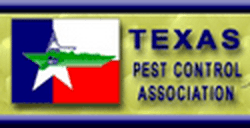Cigarette & Drugstore Beetles
Cigarette and drugstore beetles are pests of stored products. Beetles are small, about 1/8″ long, reddish-brown with an oval shape. When disturbed, the beetles may tuck in their legs and play dead.
Cigarette and drugstore beetles have different antennae and elytra (hardened front wings). Antennae on cigarette beetles are serrated while on drugstore beetles antennae end in a 3 segmented club. The elytra on drugstore beetles have rows of pits making them apprear to have lines on the while the cigarette beetles have smooth wings.
Adults enjoy dark cracks and crevices, but fly in brightly lit areas to locate a place to hide. The beetles are most active at dusk and through the night. Adults do not eat solid food, but drink liquids. Larvae are small, grub-like and creamy white.
Cigarette and drugstore beetle larvae infest a variety of products such as tobacco, flour, dried fruit, herbs ad spices, nuts, rice and pet food. These pests may also infest non-food items such as potpourri, dried flour arrangements, papier-mache’, prescription drugs, cosmetics and book-binding paste.
The life cycle is dependent upon temperature and the availability of resources-with warmer temperatures and adequate resources the life cycle is faster. Mated females lay eggs in food sources. After hatching from the egg, larvae begin to feed on the food and grow. Eventually, larvae will pupate and form a protective cocoon in the food item. Adults emerge from the pupal case and live from 1-4 weeks.
To manage these beetles, your PMP or the customer must find the source, double bag it and throw it away. All stored food items should be inspected, even those that have not been previously opened. If you don’t want to throw away the food items it can either be heated or cooled to kill any insects and then sifted to remove any insects. To freeze, put the items in a sealed plastic bag and place in the freezer for about a week. To heat the items, spread on a large cookie sheet and place in a 200 degree F oven for 1-2 hours.
- Be sure and inspect all food items before buying; do not buy damaged food products
- Seal dried goods in air-tight containers
- Store dried goods in the refrigerator/freezer if going on vacation
- Vacuum up any spilled items in the pantry
- Wipe down shelving with cleaner
- Use sealent to seal joints or cracks in the areas where dried goods are stored
Information provided and approved for use by Elizabeth Brown, Entomologist Texas AgriLife Extension















